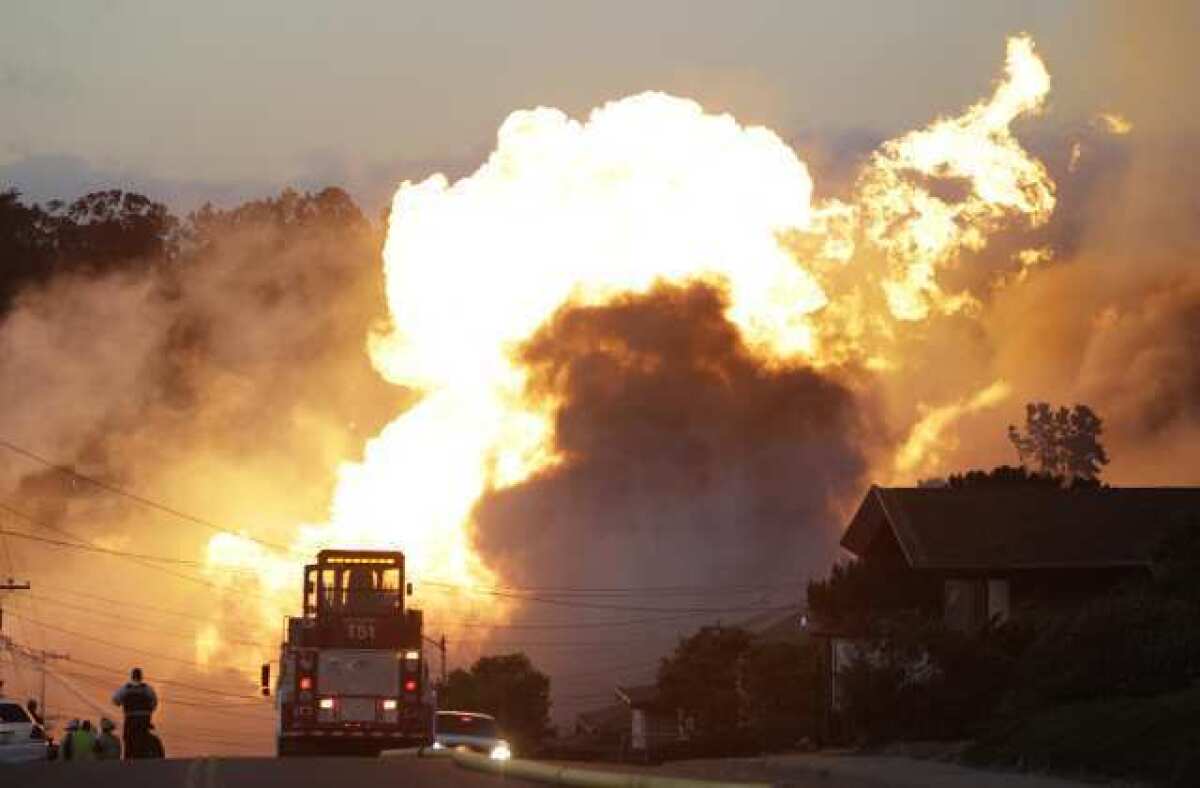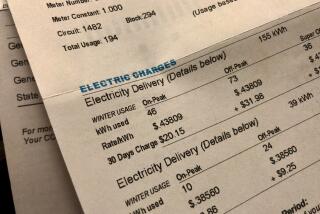California proposes a path to stripping PG&E of its license

Gov. Gavin Newsom has said he wants the option to take over bankrupt PG&E Corp. if the utility gets into trouble again. Now, the state has laid out a road map for how that could happen.
As part of proposed changes to PG&E’s reorganization plan, California Public Utilities Commission President Marybel Batjer suggested a process Tuesday through which the state could revoke PG&E’s operating license if the utility commits serious safety violations and doesn’t adequately address them.
The changes include a series of escalating enforcement actions for PG&E that would be triggered by specific events, some of which would rely on operational and safety targets.
The process would allow for additional state oversight of the utility based on the severity of violations. Those could include the appointment of a chief restructuring officer, the placement of the company under receivership or the ultimate penalty of revoking the utility’s license.
PG&E needs to win the commission’s approval of its restructuring plan by June 30 in order to take advantage of a fund that would protect it from future wildfire liabilities. PG&E filed for Chapter 11 bankruptcy more than a year ago after its equipment was blamed for causing some of the worst fires in California history, resulting in about $30 billion in liabilities.
“Investor-owned utilities have an enormous privilege in serving as a unique provider of essential services to the public — and with that privilege comes great responsibility to those they serve,” Batjer said in a statement. “I am very concerned about PG&E’s pattern of safety-related failures.”
Newsom has called for PG&E to be a completely transformed company when it exits bankruptcy. The governor said he wants the power company to replace its board of directors, shore up its financing and provide an option for the state to take over the company if it runs into deep trouble again. He’s threatened a state takeover of the utility if it fails to cave to his demands.
In its effort to win over Newsom, PG&E has promised to swap out some board members, enhance its safety focus and divide its operations into regional units as part of a corporate overhaul designed to address concerns.
Batjer, who was appointed president by Newsom last year, also proposed that the utility replace its entire board as part of its reorganization. She suggested that the commission should have the power to adjust PG&E’s earnings based on its achievement of certain safety and operational targets.
“We welcome President Batjer’s input regarding our plan for emerging from Chapter 11 and building a re-imagined PG&E,” the utility said in a statement. “We look forward to continuing to participate in the CPUC’s open and transparent public process, and we continue to receive feedback on our Plan of Reorganization from a number of stakeholders, including the Governor’s Office.”
Parties including PG&E will have the chance to respond to the commissioner’s proposals as part of the regulator’s review of the utility’s turnaround plan. The commission will begin hearings on PG&E’s bankruptcy proposal this month. PG&E said Tuesday that it remains on track to have its Chapter 11 plan confirmed by June 30.
Meanwhile, the judge overseeing PG&E’s criminal probation ordered the utility to explain how its equipment inspections overlooked rusty, worn hooks on power transmission towers near the origin of California’s deadliest wildfire on record.
U.S. District Judge William Alsup issued the order Wednesday in response to a report by an expert witness with photographs of rusty C-hooks on a transmission line near the site of the 2018 Camp fire in the Sierra foothills that killed 85 people and destroyed the town of Paradise. Alsup directed the utility to provide full details and records of its own inspections.
The San Francisco judge has shown keen interest in PG&E equipment failures that have been blamed for multiple wildfires in recent years as he continues to press the company to improve its fire safety protocols.
California investigators concluded last year that a worn C-hook allowed a jumper cable to fail, sparking the Camp fire. State regulators said that PG&E could have prevented it by conducting proper inspections and repairs.
Alsup asked about C-hooks examined by Thomas Hylton, a power line expert hired by plaintiffs lawyers who have sued PG&E on behalf of wildfire victims. Hylton told the judge he photographed C-hooks on the Cresta-Rio Oso power line running parallel to the Caribou-Palermo line, which is believed to have started the Camp fire.
The worn hooks are “a couple hundred feet away” from the failed equipment, Hylton told the judge.
Hylton, who told Alsup of his long history working on and supervising power lines, said some of the hooks were heavily worn and were clearly dangerous. “If I had C-hooks that are 30% worn, I’d replace them,” he said.
PG&E lawyer Kevin Orsini told Alsup that when the utility received Hylton’s letter describing the worn hooks, it “sprung into action.” Inspectors had examined the hooks and either missed the wear or previously concluded that they didn’t warrant replacement, Orsini said. The company has since determined that the worn C-hooks will be replaced by mid-March, he said.
“To me, this looks like significant wear,” Alsup said, referring to Hylton’s photos of the worn hooks. PG&E wants to “take a chance and gamble on that? I think you ought to get to the bottom of it instead of saying maybe they made a professional judgment that it was OK,” Alsup said, referring to PG&E’s inspectors.
Alsup blasted PG&E’s “spin” and ordered the report by March 2.
More to Read
Inside the business of entertainment
The Wide Shot brings you news, analysis and insights on everything from streaming wars to production — and what it all means for the future.
You may occasionally receive promotional content from the Los Angeles Times.










